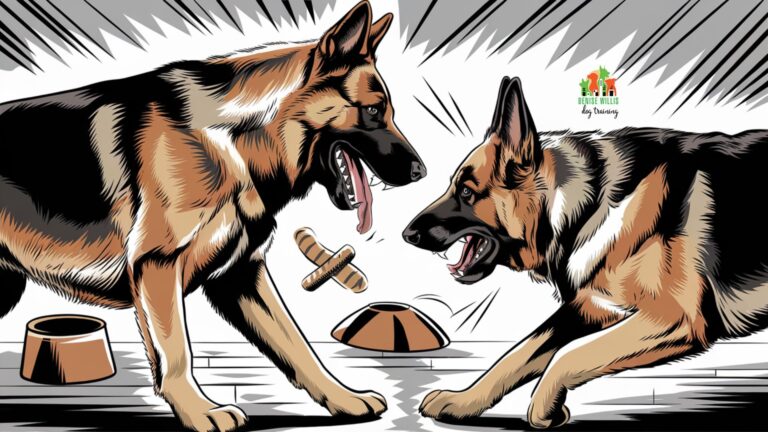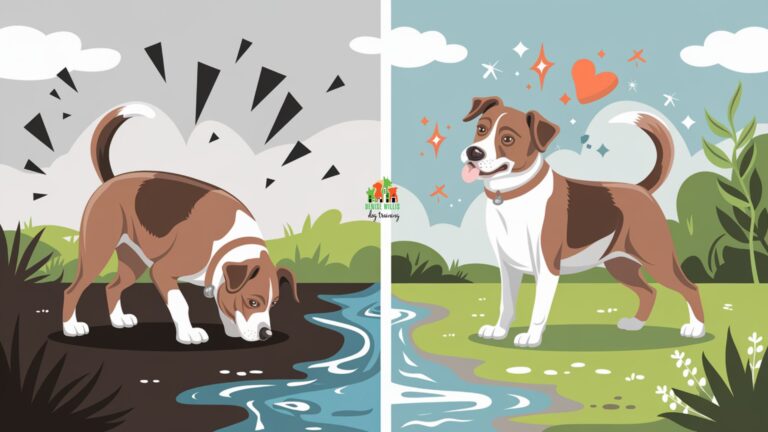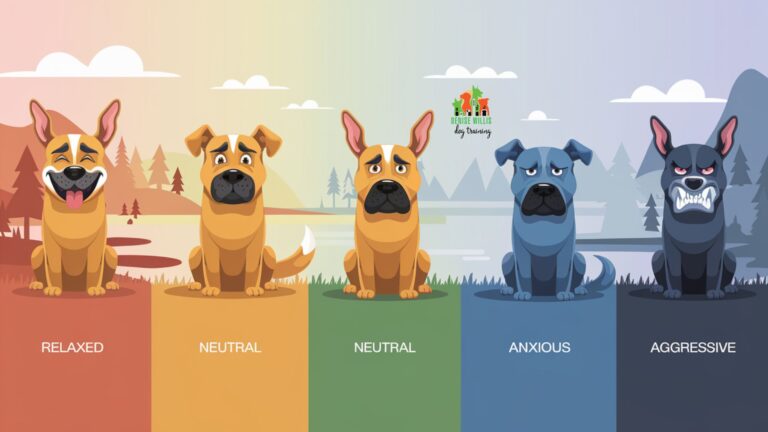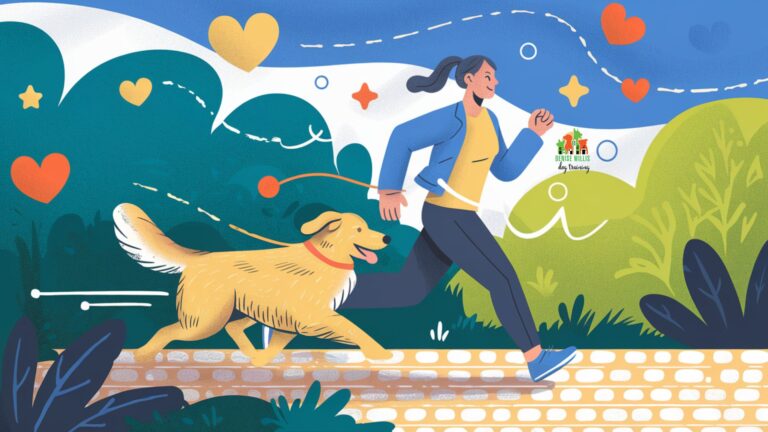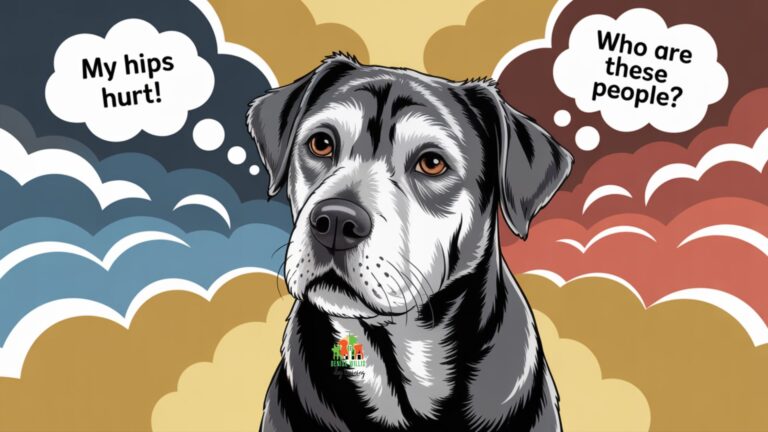Teach These 10 Commands First For a Happy, Healthy Dog Who Listens To You
📍 Service Area Notice: DW Dog Training provides in-person training services exclusively in the Greater Baltimore area. While our blog content is designed to help dog owners internationally, our hands-on training services are locally focused. For readers outside our service area, we hope you find value in our articles and welcome you to reach out with questions!
Introduction to Essential Dog Training Commands
Training your dog is one of the most rewarding parts of being a pet parent. While dogs are lovable companions, they still need to learn basic obedience to become model canine citizens. Teaching your furry friend key commands helps ensure good behavior both inside the home and out in public.
Dog training also helps strengthen the bond between owner and pup. Dogs crave structure and consistency. Going through training together provides mental stimulation and reinforces the loving relationship.
This guide will cover the 10 essential beginner commands every dog owner needs to know. They may seem simple on the surface, but mastering these basic obedience skills lays the foundation for a happier, healthier life with your four-legged friend.
Why Commands Are Critical
Commands give you a way to clearly communicate with your dog. Once understood, they allow you to:
- Regain control of rowdy or hyper behavior
- Ensure safety for both you and your dog
- Avoid problem situations before they happen
- Redirect your dog’s focus back to you
- Strengthen your bond through training together
Here’s an overview of the top 10 commands we’ll cover:
| Command | What It’s For |
| Sit | Calming, control |
| Stay | Impulse control |
| Come | Recall, emergencies |
| Leave It | Deter chewing, eating |
| Heel | Proper leash walking |
| Down | Settling, laying down |
| Drop It | Releasing objects |
| No | Stopping unwanted behavior |
| Wait | Patience, entrances |
| Off | No jumping on furniture |
While these may seem like basic skills, they provide the core foundation every dog needs. With time and consistency, your dog will respond reliably whenever these commands are given.
Training Methodology
There are a few key training principles to keep in mind as you work on commands:
- Positive reinforcement – Reward desired behaviors, don’t punish
- Short sessions – 5-10 mins, a few times daily
- Patience & consistency – Dogs learn at different paces
Proper training is also about more than just the commands themselves. It’s about building a bond with your dog founded on trust and understanding.
How to Effectively Train Your Dog on Commands
Training a dog to reliably respond to commands requires time and consistency. While each pup learns at their own pace, there are some best practices to set your dog up for obedience success.
Use Positive Reinforcement
The most effective training methodology is positive reinforcement. This involves rewarding desired behaviors and ignoring unwanted ones.
Some examples of positive reinforcement include:
- Treats – small tasty bites like chicken or cheese
- Praise & pets – enthusiastic verbal praise, belly rubs
- Toys – special toys used just for training
The key is to reward your dog immediately after they correctly perform the command. This helps them associate the behavior with something positive.
Punishing or yelling at your dog for disobedience can undermine training. Always set them up for success by being patient and engaging their natural motivations.
Keep Sessions Short
Dogs have short attention spans, especially young puppies. Keep your training sessions short and focused.
5-10 minutes 1-2 times daily is ideal when starting out. Try to end sessions on a positive note with your dog succeeding.
You can gradually increase session length as their skills improve. But when first teaching commands, numerous short periods of training work better than one long session.
Remain Patient & Consistent
Some dogs will pick up new commands in days, while others may take weeks or months.
Remain patient and consistent – progress will come with time. Stick to the same command words and training techniques.
Being consistent with the verbal cue and method of training is key. It eliminates confusion and helps your dog make connections faster.
If you get frustrated, take a break and try again later. Keep training sessions relaxed and fun for the best results.
Now that we’ve covered some fundamental training tips, let’s start with the first essential command – sit.
Essential Command #1: Sit

The sit command is often one of the first obedience cues owners teach their dogs. It provides a simple way to get your pup’s attention, establish control, and keep them calm. Mastering sit forms the foundation for training many other important skills down the road.
What “Sit” Means
The sit command tells your dog to plant their rear end on the ground while keeping their front legs straight. Their weight should remain on their hindquarters.
Some key benefits of sit include:
- Creates a natural pause in motion
- Shifts energy from rambunctious to settled
- Puts your dog in a stable position for further cues
- Allows you to regain focus from your pup
Practicing sit helps instill respect for your authority while strengthening your bond.
Teaching “Sit” Effectively
There are a few different ways to teach your dog to sit:
Luring – Hold a treat at nose level then raise it upward and back over their head as they tilt up to follow until their bottom touches down. Say “sit” then reward.
Capturing – Wait until your dog sits on their own, say “sit!”, reward and praise. Repeat this to connect the behavior with the verbal cue.
Adding Cue – Apply gentle upward pressure on the collar/leash while pushing down on their hindquarters until they sit, praise, then add “sit” right before releasing.
Be patient and consistent. With regular 5-10 minute practice sessions, most dogs will quickly associate sit with the specific verbal and physical cues.
When to Use “Sit”
Sit can help make many daily activities easier:
- Front door opening
- Guest greetings
- Feeding time
- Crossing the street
- Getting in the car
- Going for a walk
Any time you need your dog’s attention or to quickly establish control, asking for a sit is a good reflex. It sets the stage for further cues and keeps your dog focused on you.
Now that you’ve mastered this first essential building block, let’s move on to the vital stay command next.
Essential Command #2: Stay

Once your dog understands sit, the next vital command to tackle is stay. Having a reliable stay can help reinforce impulse control, improve patience, and prevent your pup from bolting into unsafe situations. It’s one of the most important cues for both training and real-world applications.
What “Stay” Means
The stay command tells your dog to remain fixed in their current position until you release them. This could be a sit stay, down stay, or stand stay depending on the context.
Key reasons to teach stay include:
- Prevents door dashing or running off
- Aids in impulse control training
- Keeps your dog settled when needed
- Allows you to complete tasks without interruption
A solid stay helps strengthen your leadership and provides an essential self-control lesson.
Training “Stay” in Small Steps
Stay requires considerable patience and repetition to teach. Take it slow by first mastering short-duration stays right in front of you, then increase:
Duration – Gradually expect longer stays from 10 seconds to 1+ minutes
Distance – Very slowly move further away inch by inch over multiple sessions
Distraction – Add minor distractions like toys or sounds after stay is reliable
If your dog breaks the stay, quickly say “uh uh” and return them to the original position without any reward. Keep sessions short and upbeat.
Be sure to practice stay in various real-life scenarios – at the vet, front door, and during meals. Consistency across environments ensures obedience when it matters most.
When You’ll Use “Stay”
Stay is invaluable for:
- Guest greetings
- Doorbell rings
- Getting the mail
- During phone calls
- At the vet’s office
- While paying at stores
Anytime you need your dog to maintain self-control and not jump up or run off, stay is the perfect command. It allows you to go about daily tasks without worry.
Now that you’ve got sit and stay mastered, let’s move on to reliable recall with the vital come command next.
Essential Command #3: Come

A reliable come command can be one of the most important cues you teach your dog. Having a solid recall allows you to call your pup back from danger, distractions, or simply when it’s time to go. It’s vital for both safety and real-world obedience.
Why “Come” is Critical
Come gives you a way to immediately call your dog directly to your side or position, regardless of what they are doing or what’s happening.
Key reasons to master it include:
- Quickly get their attention in an emergency
- Interrupt chasing or aggression towards others
- Prevent running off or escaping your property
- Regain control in distracting public settings
- Brings playtime or walks to an end
Come helps keep your dog safe while reinforcing you as the pack leader.
How to Train a Reliable “Come”
There are a few methods to teach effective recall:
Reward-based – Use high-value treats and excited praise whenever they come to you. Say their name + “come!”
Long leash – Let them wander on a long leash then reel them in when saying “come”, reward.
Hide & seek – Have someone hold your dog while you hide, call “come”, give treats once found.
Real-world practice – Reinforce coming when called during walks, hikes, trips to the dog park.
Be very animated and excited when your dog responds to come. Show it’s a highly rewarding behavior. Never scold them when they come to you – keep it positive.
When You’ll Need “Come” Most
Solid recall is critical in situations like:
- Front door or gate left open -bolts off leash during walks
- Approaching other dogs or people
- Smells something and starts wandering off
- Distracted in an unsecured area
Any circumstance where your dog may be tempted to ignore you or run off, come quickly brings them back to your side and immediate control.
Now that your dog is mastering recall, let’s cover how to get them to leave tempting and dangerous things alone.
Essential Command #4: Leave It

Dogs love to put all sorts of things in their mouths whether it’s edible or not. The leave it command gives you a way to stop your pup from chewing on or ingesting potentially dangerous objects. It’s one of the most valuable life-saving cues you can teach.
What “Leave It” Means
Leave it signals to your dog that whatever has their interest right now is completely off limits. They should immediately stop engaging with it and divert their attention back to you.
Key reasons to teach leave it include:
- Prevents eating inedible or toxic objects
- Stops chewing inappropriate items
- Ignores tempting food that’s not theirs
- Avoids sniffing dangerous animals/areas
- Refocuses attention back to you
Leave it helps dogs resist their impulses and follow your clear directions.
How to Train “Leave It”
There are a couple of effective techniques for teaching leave it:
Treat method – Show a treat in your fist, say “leave it”, wait for them to stop licking/pawing at your fist, then reward from the other hand.
Object method – Place an item on the floor, cover it with your hand, say “leave it” when they go for it, and then reward when they lose interest.
Start with lower-value items and increase temptation as their impulse control improves. Remember to reward not just for leaving the item alone, but diverting focus back to you.
Real-Life Uses for “Leave It”
Leave it is extremely useful any time your dog shows interest in something undesirable or dangerous:
- Food dropped on the floor
- Trash on the ground during walks
- Animals that could bite or provoke
- Children’s toys and belongings
- Rotting food or animal remains
- Poisonous plants and flowers
It quickly breaks their focus and prevents a costly or hazardous mistake. Leave it can protect your dog’s health and even save their life.
Now let’s cover proper walking etiquette with the heel command.
Essential Command #5: Heel

Walking properly on a leash without pulling or lunging is a key skill every dog should learn. The heel command teaches your pup to calmly stay by your side which makes strolls around the neighborhood more pleasant for everyone.
What “Heel” Means
Heel tells your dog to match their pace and position to you as you walk together, without straining on the leash. Typically, they should be near your left leg looking up at you.
Benefits of a good heel include:
- Prevents leash pulling and choking
- Establishes you as pack leader
- Enables pleasant, controlled walks
- Aids in socialization and obedience
- Keeps your dog focused on you
A dog that heels is much easier to handle on-leash and less likely to dart off in public.
Training a Solid “Heel”
There are a few techniques to teach this skill:
Lure method – Use treats to coax your dog into the proper heel position over several sessions. Wean off treats over time.
Turning method – Each time your dog pulls, quickly change direction. They learn to follow you to avoid getting yanked.
Verbal praise – Use “good heel!” each time your dog stays in an ideal position. Reward intermittently with treats.
Be sure to practice in multiple locations – start at home, then backyard, then low-distraction areas before high-distraction areas. Keep sessions upbeat and insert breaks to avoid boredom.
When You’ll Use “Heel”
A heel is helpful during:
- Regular neighborhood walks
- Passing other people or dogs
- Entering pet stores or vet offices
- Walking through crowded areas
- Going for hikes or outdoor adventures
It keeps your dog focused on you, rather than on potential distractions. Loose leash walking makes exercise more pleasant for both you and your pup.
Now let’s cover the down command for asking your dog to lay down and settle.
Essential Command #6: Down

Once your dog understands sit, teaching them to down on cue is the next logical step. Having a reliable down helps reinforce impulse control, provides an “off switch” to hyper behavior, and places your dog in a stable position.
What “Down” Means
The down command tells your dog to fully lower their body with legs tucked under and belly touching the floor. Their weight should remain evenly distributed.
Benefits of mastering down include:
- Creates a natural “pause” in their movements
- Shifts energy from excitable to settled
- Puts your dog in a submissive, non-threatening posture
- Lets you regain control of rowdy behavior
A dog that will down on cue is exhibiting respect for your leadership role as their guardian.
Training “Down” Effectively
There are several effective techniques to teach down:
Luring method – Hold a treat and slowly move it down towards the floor in front of your dog’s nose until they lie down, then reward.
Step on leash method – With your dog sitting, gently step on the leash and apply slight downward pressure as you give the cue. Release tension and reward once they are fully down.
Hand signal method – Use a flat hand signaled downward right before gently pushing their hindquarters down. Reward once in position.
Be very patient, using high-value rewards and keeping sessions short, as down can take more repetition to master. But work at your dog’s pace using positive reinforcement until the cue becomes second nature.
When to Use “Down”
The down command is useful during:
- Playtime – helps regain calm
- Meals – keeps them settled vs. begging
- At the vet – less threatening position
- Dog park – enforces breaks
- Guest greetings – prevents jumping
- In public – maintains control
Any circumstance where your dog needs to take a breather and lay down, down gets them settled quickly. It’s an essential life skill.
Now let’s cover how to get your dog to drop something from their mouth when needed.
Essential Command #7: Drop It

Dogs naturally love to grab and chew items they find interesting. But some objects can be harmful if ingested. The drop it command gives you a way to immediately get your pup to release whatever is in their mouth.
Why “Drop It” is Important
Having your dog drop something from their mouth can serve multiple purposes:
- Removes hazardous objects if chewed or swallowed
- Stops destructive chewing of household items
- Aids in fetch games when it’s time to relinquish the toy
- Prevents guarding of objects and teaches sharing
Drop it instills respect for your authority and instructions. It provides an essential level of protection from harm.
How to Teach “Drop It”
A few effective techniques for teaching drop it include:
Two-toy method – Give one toy then present another toy while giving the “drop it” cue. Reward with the new toy once they release the first.
Treat method – Give your dog an item, wait until they settle with it, then show a treat and give the cue. Reward with a treat once dropped.
Hand signal method – Use a hand signal (open palm facing up) as you give the verbal cue. Reward once they release the item into your hand.
Start with low-value items first. Exchange for a treat or toy rather than just taking it away. Always reward the desired behavior!
When You’ll Use “Drop It” Most
Key times you’ll need the drop it command include:
- Grabbing inappropriate chew items – shoes, furniture, etc.
- Picking up dangerous trash or spoiled food on walks
- Getting the TV remote or your wallet
- Removing sticks or rocks from their mouth
- Ending playtime with certain toys
Drop it quickly forces an item from your dog’s mouth to protect their health and your belongings. An essential cue!
Now let’s cover how the simple yet powerful “no” command can curb unwanted behavior.
Essential Command #8: No

While positive reinforcement training is ideal, sometimes you need a quick and firm cue to tell your dog to stop an unwanted behavior in its tracks. That’s where the powerful no command comes in handy.
What “No” Communicates
The word no signals to your dog that whatever they are doing at the moment is unacceptable and they must cease immediately. It helps snap them out of the behavior.
Reasons why no is useful:
- Stops unwanted habits quickly
- Allows for gentle corrections
- Can help prevent repeat behaviors
- Gets their attention on you promptly
- Establishes essential behavior boundaries
While not a standalone training method, no provides an invaluable interruption when needed.
How to Use “No” Effectively
Some tips for using no effectively include:
- Say it loudly and firmly. You want this to grab their attention.
- Use sparingly – only for behaviors you want extinguished. Overuse makes it lose impact.
- Be proactive. Say no as soon as the behavior begins. Don’t wait until it escalates.
- Redirect to a positive action after saying no. Following up with a command they know helps reinforce the correction.
- Never use no without a reason. Your timing and context need to be precise.
The more you use no for specific behaviors only, the better your dog will understand when and why it’s being used.
When to Say “No”
Common situations where no is appropriate:
- Chewing on off-limit household items
- Jumping up on guests or children
- Begging aggressively at the table
- Barking excessively at passersby
- Chasing cats or squirrels in the yard
- Bolting outdoors or entering off-limit rooms
- Grabbing food or toys from others
The flexibility of no makes it helpful for a wide range of circumstances where unwanted habits need curbed.
Now let’s cover waiting patiently at thresholds until released.
Essential Command #9: Wait

Dogs tend to rush exciting areas like doors or gates, pulling their leash-holding owners along with an abrupt jolt. The wait command provides an important impulse control lesson, teaching patience at thresholds until released.
What “Wait” Means
Wait tells your dog to stop at a door, gate, or boundary line and maintain their position until you signal it’s okay to proceed. They should refrain from pulling or lunging forward.
Benefits of a solid wait include:
- Prevents door bolting or dashing out
- Ensures calm entrances and exits rather than pulling
- Allows you to enter/exit first safely
- Checks excitable energy before a walk
- Provides a chance to get their attention
Wait instills good manners, respect, and self-control. It sets them up for success going forward.
How to Train “Wait”
A few useful techniques for teaching this cue:
Leash method – With your dog on a leash, stop a few feet from the door. Say “wait” (use a hand signal too if needed). Reward calm behavior, then release forward with “okay!”
Second person method – Have someone outside the door. When your dog stops at the sound, reward the wait, then let the person enter and give treats.
Increase difficulty – Gradually ask for longer waits before rewarding and releasing through the door/gate.
Use very high-value treats at first. Be patient – wait can take many repetitions before it becomes a habit as excitement builds at boundaries.
When You’ll Need “Wait”
Key times to enforce this command:
- Front or back door before going outside
- Car door when getting ready for a ride
- Baby gate before entering a room
- Crate door before coming out
- Elevator door before exiting
- Front boundary before starting a walk
Wherever propriety matters when entering or exiting, wait keeps your dog focused until you give the green light.
Now let’s cover training your dog how to restrain themselves from jumping on people.
Essential Command #10: Off

Many dogs love to jump up in greeting. But this can be problematic with guests, children, or strangers who may find it scary or threatening. The off command gives you a way to curb this enthusiasm and teach polite restraint.
What “Off” Means
Off signals to your dog that they must immediately stop jumping on a person, furniture, or other surface. Their paws should return back to the floor.
Benefits of this command include:
- Prevents jumping on visitors
- Protects children and the elderly from getting knocked over
- Keeps dirty paws off clothing and furniture
- Discourages attention-seeking behavior
- Helps strangers feel more comfortable around your dog
Off is essential etiquette that makes your dog more welcome in every environment.
How to Teach “Off”
There are a few effective techniques for this:
Knee method – Lift your knee to block your dog’s access each time they jump up. Say “off” then reward four paws on the floor.
Lure method – Hold a treat at their chest level then move it down towards the floor saying “off.” Reward once all paws are on the ground.
Verbal correction – Say “off” sharply each time they jump. Redirect to a sit and reward.
Be sure to practice this with a range of people – both family and strangers. Consistency builds good lifelong habits.
When You Use “Off”
Key times to enforce off:
- Jumping on visitors at home
- Greeting strangers during walks
- Putting paws on kitchen counters
- Stepping on a sofa or bed with dirty paws
- Excitedly jumping on children or elderly
Anytime paws shouldn’t be on a person or surface, off sets clear boundaries and expectations.
Now that you’ve covered these top 10 basic commands, let’s recap why they are so essential to train.
Reinforcing Training with Professional Help
While this guide covers the top 10 obedience commands every dog should learn, training your pup thoroughly requires immense patience and consistency. Many owners benefit from professional assistance reinforcing lessons and troubleshooting problems.
Remaining Patient is Key
Dogs learn at different paces depending on age, breed, temperament, and past experiences. Setting realistic expectations for your pet parent and canine companion relationship is important.
Some key tips:
- Keep training sessions upbeat – avoid frustration
- Stick to one cue for each command
- Practice daily in short bursts
- Reward success and ignore minor mistakes
- Monitor progress but allow time for habits to form
Approach training as a long-term commitment rather than expecting overnight results.
Professional Training Benefits
While training yourself is rewarding, professional dog trainers can provide:
- Expertise honed from years of experience
- Customized training plans for each dog’s needs
- Troubleshooting for difficult behavioral issues
- Proper handling techniques tailored to your pet
- Guidance for the whole family to stay consistent
- Obedience reinforcement even after lessons end
Investing in professional training sets your dog up for success while saving you time, stress, and confusion.
DW Dog Training Can Help
Here at DW Dog Training, our certified professionals specialize in obedience training and behavior modification. We use proven techniques to deliver the results you want with your beloved pup.
Contact us today to learn more about our private training programs!
Now let’s recap why mastering these foundational skills matters so much.
Final Thoughts
Hopefully, this guide has convinced you how essential it is to teach your dog basic obedience commands. While it takes diligence and repetition, the effort pays lifelong dividends in terms of safety, manners, and enhancing your bond.
Mastering these 10 fundamental skills is just the beginning. Dogs crave structure and consistency. Ongoing training deepens their understanding and helps dog-proof behaviors in real-world situations.
But having a well-behaved canine companion starts with sit, stay, come, and the other foundational cues covered here. They may seem simple on the surface, but make a world of difference in habituating your pup to your leadership.
Training sessions also provide invaluable quality time with your furry friend. The more you positively reinforce desired behaviors, the stronger your trust and communication will become.
If you need extra guidance, don’t hesitate to enlist the expertise of a professional dog trainer like the experts here at DW Dog Training. We can help take your dog’s manners to the next level.
Key Takeaways
- Teaching basic commands establishes you as a leader and provides mental stimulation
- Structure and consistency are key – set clear expectations and stick to them
- Use positive reinforcement like treats and praise to motivate the best
- Patience over time leads to lifelong habits – don’t get frustrated!
- Professional trainers can help fully-proof skills and provide accountability
- Obedience strengthens your bond and keeps your dog safe
We hope these essential beginner obedience tips set you and your dog up for training success! Let us know if you need any help along your journey together.


